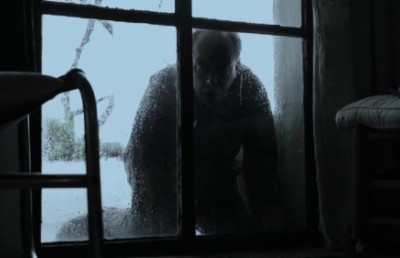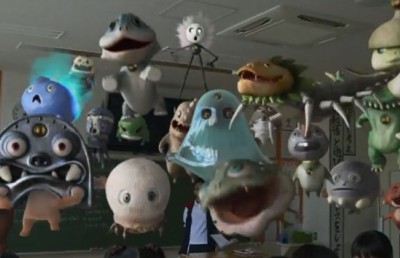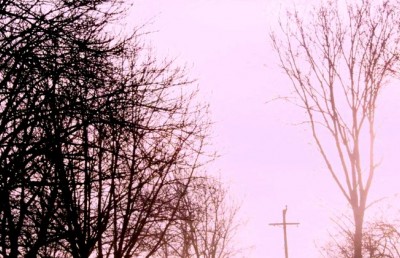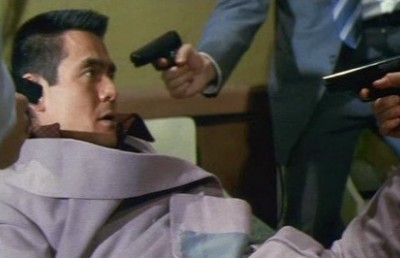Screened Terror and Networked Fear: Unfriended, Horror, and the Digital Age
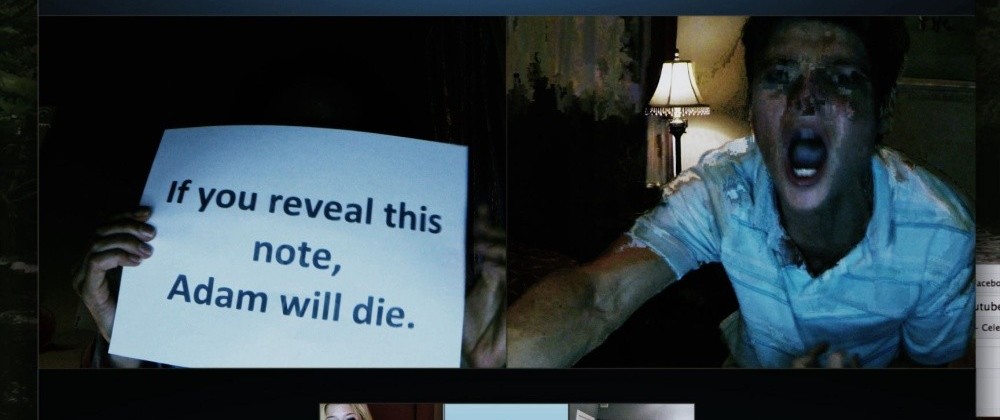
The terror of technology, or to be precise, of networked technology, will infuse the horror genre as we become increasingly entangled in the web of social media, “sharing” and living connected lives throughout our waking moments. Amongst the plethora of great films on offer at Fantasia in 2014, was a feature spotlight entitled “Antisocial Media.” The spotlight showcased films featuring, that almighty presence in our life: social media. Included were the films Killers (2014), about a man who films his murders and then uploads them onto the internet and the South Korean Ingtoogi: Battle of the Internet Trolls (2013), which featured fights between Internet trolls bleeding from the digital into the physical world. Other titles were The Snow White Murder Case (2014), wherein text messages and tweets unroll across the screen, offering another dimension to thenarrative. Open Windows (2014), which took the audience on a thrill-ride down a rabbit hole of webcam feeds and surveillance software, and Cybernatural (2014) (eventually released as Unfriended), the film that will be at the forefront of my discussion.Unfriended offered a revelatory filmic experience as it unfolded in real time, across the personal computers of its main characters.
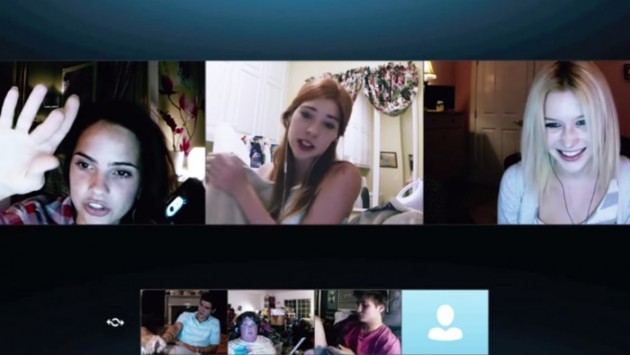
Unfriended
With films like Open Windows, Unfriended, and The Snow White Murder Case, the ubiquitous modern technologies that we’re all so familiar with such as laptops, cell phones, and social media played important roles within the narrative; not simply in the background or as props, but almost as characters in themselves, creating an intriguing cinematic experience that melded medias. The films offer differing examples of how these technologies can be incorporated into a cinematic narrative, in particular, how they can be used to evoke different viewership reactions. Though a “melding of technologies” can be seen across the genre with the variety of found footage films that have emerged since The Blair Witch Project was released in 1999, a new form is starting to take shape wherein the action takes place on computers through social media. Thus far, Unfriended has taken this new approach the farthest, adding a new dimension to horror as these technologies are so enmeshed within our lives. It’s harder to distance and desensitize ourselves to the real terror from the image of social media than a more classic scenario such as a haunted house, or an abandoned mental hospital. Found footage films come close, but more of us use Facebook in our daily lives than run around in a dark forest with our handhelds. With this in mind, my main concern with this review is to explore how the use of filming through personal screens and using social media as a space in which action occurs, is used to provoke a sense of terror and horror in the audience.
In general, the horror genre exploits the fears of its audience by constructing a narrative that can be connected to societal fears. A close reading of meaning within film’s images is, to my mind, still a relevant part of the process when discussing cinema and will not be discounted here. I would like to briefly touch on the reflective aspect of Unfriended as it pertains to our current connected society. Noteworthy is the name change from Cybernatural to Unfriended, and while I prefer the poetic tinge of Cybernatural, Unfriended is far more apt in revealing the crux of the subject matter. Although this is still a horror film, with plenty of jumps (albeit rather cliché) and a devious, vengeful ghost, these are secondary to the film’s true narrative, which is a comment on the shadowy side of social media. More specifically, the film deals with the growing epidemic of cyberbullying. Though the theme of cyberbullying is relatively new to film in general —only a small handful of titles have dealt with the issue including, Wasted on the Young (2010), Cyberbully (2011), and Disconnect (2012)— the overall plotline of the film is deeply traditional.
Noël Carroll’s book The Philosophy of Horror, or Paradoxes of the Heart outlines common horror film narratives, including ghost stories that involve “the return from the dead of someone who has left something unsaid or undone, who wishes something unacknowledged to be brought to light, or who wants revenge or reparation” (Carroll, p. 98). This narrative trope holds true for Unfriended, which despite the newness of its style, is simplistic in the structure of its story—silly teenagers, an angry ghost, and everyone dies in visceral agony. The basis of the narrative is a group of teenagers that get together for a chat over Skype a year after their mutual friend is driven to suicide by a particularly brutal case of cyberbullying. The story is then told through the interweaving of Skype conversations, private IMs, Google searches, and Facebook browsing while webcams serve to show the viewer the characters’ faces and any action that happens beyond the laptop screens. This is what makes Unfriended so fantastic. We can forgive the shortcomings of the film’s loathsome characters and the predictable plotline because the experience itself is something innately noteworthy. This is not just a narrative unfolding within a screen, it is screens within a screen. It is a dark shadow of our digital lives reflected through cinematic medium.
As the film’s characters are unable to look away from the media on their computer screens – even as the mysterious ghost in the machine plagues them – this becomes a reflection of how we too are attached to the constant barrage of emails and social media alerts despite the constant flow of external activities swirling around us. It’s an interesting cinematic technique that is undoubtedly successful in making us consider our own attachments to these medias. While Open Windows is also rife with screens within screens (within screens), it is Unfriended that truly pushes the envelope in this respect. Director Levan Gabraidze’s novel approach to the cinematography is what makes it impossible to look away. Mekado Murphy, who reviewed Unfriended for the New York Times, points out that, “[w]hile dramas like Disconnect (2013) and Men, Women & Children (2014) have grappled with how technology is changing our lives… It may be the horror genre that best examines the intimate and unsettling nature of technology and how we construct our online selves” (Mekado Murphy).
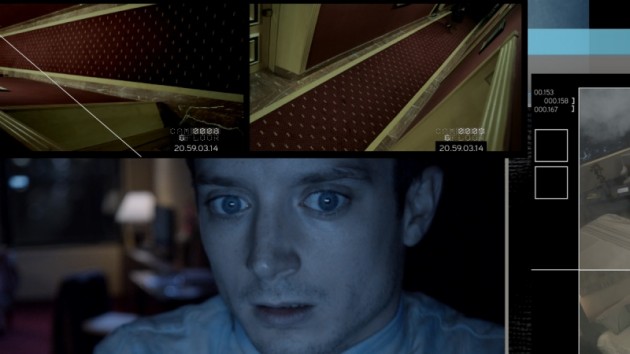
Open Windows
Part of what makes it possible to view the social medias that we are so close to in our daily lives in a film like Unfriended, is that we are looking at interactions with these familiar technologies from the outside in. Imagine you are with your laptop, exchanging messages and “liking” pictures on Facebook, when suddenly you find yourself having an outer-of-body experience? You look and see yourself, unaware of the time going by as you click and scroll and type, click and scroll and type.
When set within a horror film, this act of watching these interactions grows into something that unsettles and frightens, which is what occurs upon viewing Unfriended. The film’s protagonists are not relatable, most of us would not be able to connect with them, but their technology on the other hand, is something we very much identify and connect with. It is less the “vengeful ghost” acting out on the human characters that is frightening, and more the warping of such familiar and mundane digital medias that scares us.
To emphasize this point further, in an interview with the New York Times, writer of Unfriended, Nelson Greaves, explains how “our digital lives are full of secrets… You type in a password to get onto the computer. You type in another password to get onto your email. Because of those passwords, we feel like these are safe spaces. And so we behave in these spaces ways that we don’t anywhere else” (Murphy). For both Unfriended and Open Windows, we are presented with the possibility that the digital spaces that we claim, are not inherently ours. That they can be invaded at any time by outside forces, that perhaps our private messages are not as private as we think they are, maybe in our connected lifestyles, we’re never truly alone and these technologies provide us with many benefits but can also be used against us at any time. Open Windows is a more realistic (and I use the word loosely) exploitation of our fear of how technology can be used to survey our every move, a very real fear for many of us in the era post Edward Snowden’s NSA spying revelations. But Unfriended, because it deals with technologies that are more inscribed in our daily lives, unsettles more deeply.
Unfriended plays out in networked space, which artist Richard Packer (riffing off Edward Soja and Homi Bhabha) refers to as “Third Space.” This third space occurs between first space (the physical world, the “known” world) and second space (the virtual world). Third space is, in the simplest terms possible, a networked space: a shared social space, a “collective space, transcending the first and second spaces as a place of “Other,” a place of open possibilities, a place of new potential for going beyond the physical and the representational” (Richard Packer).
It is in this third space that remote participants can meet and engage within a virtual geography. Unfriended explores the invasion of this third space with the presence of the digital “ghost.” The ghost is “unseeable,” a presence that exists only in third space but that influences and destructs first space and second space: a physically deadly version of a computer virus. Geared towards a viewership that spends so much time engaged within this space, Unfriended attempts to destroy the ideals of the network, replacing complacency with fear.
Of course, we will probably not be attacked via our laptops by a vengeful spirit (knock on wood), but Unfriended is still a reminder of how much technology shows, and how much it hides. How much is private, and how much do we only think or wish were private that can be exposed in an instant. Many who interact within social media tend to not question the belief in the private nature of password-protected spaces. Unfriended aggressively reveals a third space under attack.
Marshall McLuhan’s The Extensions of Man immediately came to mind after viewing Unfriended. As he writes in his seminal text, Understanding Media, “all technologies are extensions of our physical and nervous systems to increase power and speed” (Marshall McLuhan, p.90), therefore, the digital medias presented to us in Unfriended, like Skype and Facebook, can be considered extensions of ourselves as well.
But, McLuhan offers a warning that with each technological extension, an amputation or modification occurs within another extension. He uses an example of losing Morse code skills with the advancement of voice-based radios. Thinking of this within the context of Unfriended, I wondered what was “amputated or modified” when social media became an extension of man? Of course, the most obvious answer is that while we are connected constantly online, we lose the advantages of face-to-face relationships. Unfriended reveals a tragic human disconnect and loss of empathy. A young girl’s embarrassing behaviour is filmed and shared with the world without a thought. Later, her suicide is also recorded and callously shared. Essentially, with the advent of social media, it has become so much easier to be cruel without thought. Bullying has always been present in society but cyberbullying puts the victims’ torture on display to a much (much) wider audience. So how does this relate to horror? For Unfriended, I found the horror of it lay less in watching the protagonists being picked off one by one, but rather in the way I was lulled into a sense of familiarity by watching actions that I participate in every day, the scrolling and clicking mouse, and the typed and retyped messages, flit before my eyes only to be emotionally jarred by unsettling moments. The suicide video, the ominous unknown presence, all the little jumps and scares become so much more terrifying when you’re sucked into the real-time, dulling yet addicting actions of surfing the web and engaging in mostly inane chatter via social media.
Thus far, I have placed Unfriended within its cultural context and discussed how the film unsettles us by reflecting back to us our relationships with digital media. I would now like to discuss how the film affects us in terms of how we look at horror film. Anna Powell writes:
The horror film’s plot, action, special effects and finally, the existence of the film itself, is technology-dependant. Events are recorded, seen and heard through camera lenses and microphones, as well as being played back to us by cine- projectors, videos and DVD players. The viewer also experiences the film as an event. Camera shake, blurred focus and extreme close-ups…have a direct affect on our mechanisms of perception before they reach a more advanced stage of cognitive processing” (Anna Powell, p. 5).
Framed within a frame within a frame, Unfriended becomes an interesting case study when looked at through a Deleuzian lens: in particular, the concept of movement-image. Within this concept, there are three levels: perception, action, and affection. When viewing Unfriended, we are seeing what the protagonists perceive on their personal laptops. We are viewing an image that is an imaging of perception: this is, in Deleuzian terms, a perception-image. The affection- image is “located between perception and action…affection is a facet of the perceptual evolution from external action to internal contemplation” (Anna Powell, p. 117). This is a rather simplified summing up of Deleuzian concepts but it is an interesting jumping off point when thinking of the combination of structure and media in Unfriended. To quote Deleuze, “[t]he affection image is the close-up, and the close-up is the face” (Gilles Deleuze, p. 89). Considering the majority of Unfriended is close-ups of the protagonists’ faces via their webcams, this is a good starting off point. Deleuze identifies the face as something that has sacrificed movement – the face is displayed as a film between movement and sensation, stasis and micro- movements. It is the simultaneity of these things that create the affect of the face.
If we think of not only what is occurring in front of the face, but behind it also, we can imagine that we are looking in as much as we are being looked at. Deleuze says:
There are two sorts of questions which we can put to the face, depending on the circumstances: what are you thinking about? Or, what is bothering you, what is the matter, what do you sense or feel? Sometimes the face thinks about something, is fixed onto an object” (Deleuze, p. 91).
Throughout Unfriended, the characters’ faces go from unemotive, rather poker- faced, to expressions of pure fear as the action slowly begins to build. We know there is something at work behind the close-up but it is not expressed. Later, we are presented with the face in the opposite state: in paroxysms of fear. “Emotions like terror…manifest power-qualities, which are virtual possibilities waiting to be actualized in particular conditions. The quality of the image depends on both its context in the film and its particular affect on the spectator” (Anna Powell, p. 118.) Further, “The affect is the entity, that is Power or Quality. It is something expressed: the affect does not exist independently of something which expresses it, although it is completely distinct from it. What expresses it is a face, or a facial equivalent” (Deleuze, p. 99).
Though in many cases it is not a literal “face” that is used to accomplish this affect, Unfriended relies solely on the facial close-up to express the quality of terror. In the film, these faces are isolated, partitioned through the medium of the webcam. Aesthetically, they are essentially disembodied and alone. This “nudity of the face is much greater than that of the body, an inhumanity much greater than that of animals… At this point it no longer reflects nor feels anything, but merely experiences a mute fear. It absorbs two beings, and absorbs them into the void. And in the void it is itself the photogramme which burns, with Fear as its only affect” (Deleuze, p. 102).
In viewing Unfriended, we look at these faces that carry the quality of fear, but we are also viewing them second-hand. The faces are filtered through the medium of the webcams and the personal computers, viewed first with from the perception of onscreen characters, and then perceived by us. What occurs is not only disorientation within the viewer, but a sense of disconnect. Sympathy and fear is aroused by the images, but also disturbed by the layering of mediums through which it is presented. In a sense, the fear that is stirred up in viewer lies within this disconnect, a disconnect that reflects the opposite yet possibly inevitable consequence of networked space. When this push and pull of sensation versus disconnect is packaged within a horror film, the outcome can only be the sensation of being deliciously disturbed.
Unfriended represents not only a new subject to be explored within the horror genre, but a new way of filming this subject as well. The film is about events occurring in third space, filmed on and in third space. The terror that occurs within the narrative only superficially connects to the action on screen but lies more in the implication that the media we interact with on nearly daily basis is so open to attack. This is, in a sense, an invasion movie. With the addition of South Korea’s Socialphobia (2014) to Fantasia’s 2015 line-up, it looks as if the invasion of “social media horror” is set to keep storming the gates of the genre.
And with that, I’m off to check my Facebook messages: see you in third space.
Bibliography
Carroll, Noël. The Philosophy of Horror, or Paradoxes of the Heart. New York: Routledge, 1989. Print.
Deleuze, Gilles. Cinema 1: The Movement-image. London: Athlone, 1986. Print.
McLuhan, Marshall. Understanding Media: The Extensions of Man. 1964. Print.
Murphy, Mekado. “In ‘Unfriended,’ Horror Unfolds on a Desktop Screen.” The New York Times, 11 Apr. 2015. Web. 14 June 2015.
Powell, Anna. Deleuze and Horror Film. Edinburgh: Edinburgh UP, 2005. Print. P. 5
Packer, Richard. “Third Space Place of Other.” Reportage from the Aesthetic Edge. N.p., 26 Sept. 2014. Web. 14 June 2015.



